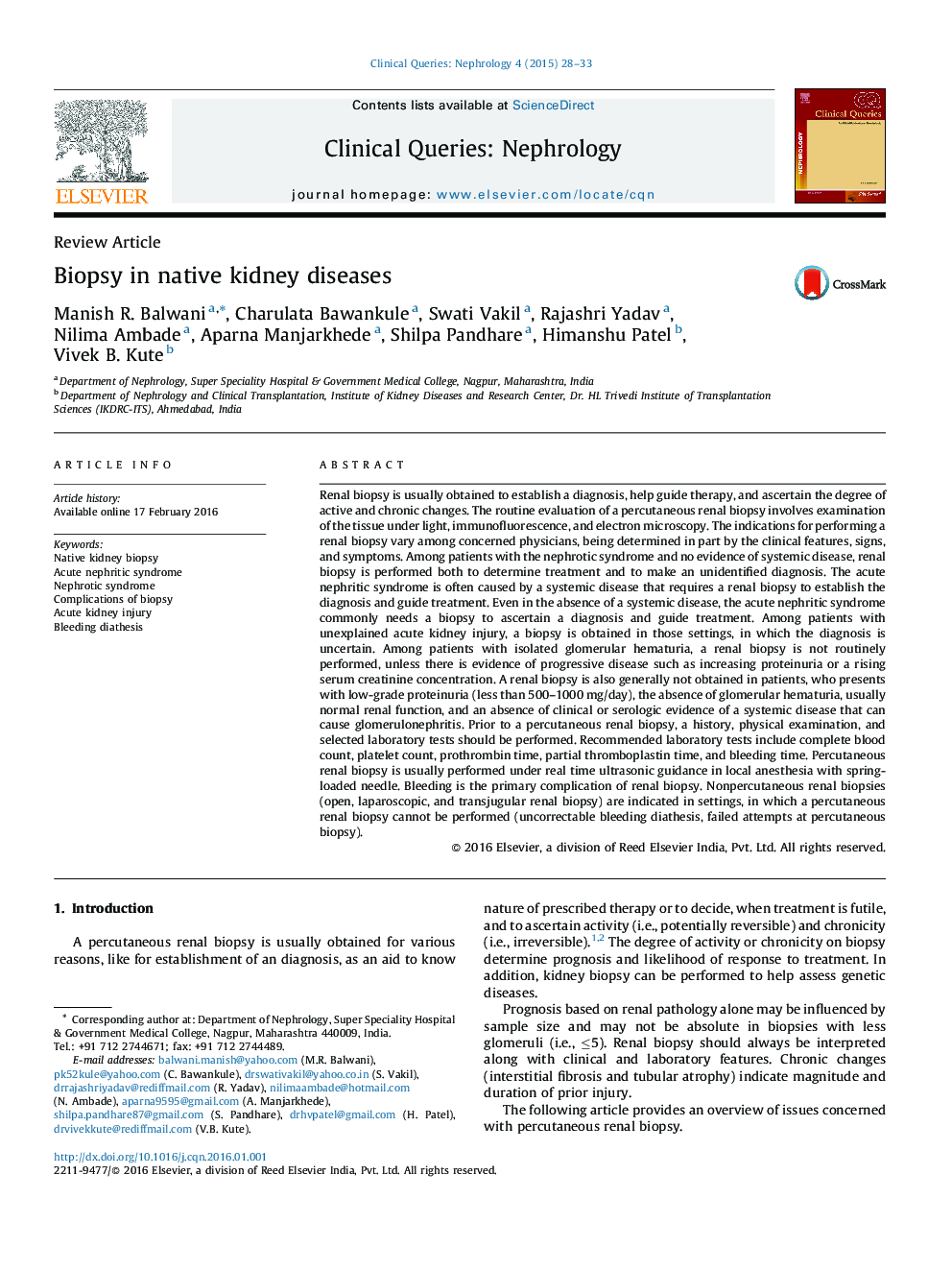| Article ID | Journal | Published Year | Pages | File Type |
|---|---|---|---|---|
| 3107923 | Clinical Queries: Nephrology | 2015 | 6 Pages |
Renal biopsy is usually obtained to establish a diagnosis, help guide therapy, and ascertain the degree of active and chronic changes. The routine evaluation of a percutaneous renal biopsy involves examination of the tissue under light, immunofluorescence, and electron microscopy. The indications for performing a renal biopsy vary among concerned physicians, being determined in part by the clinical features, signs, and symptoms. Among patients with the nephrotic syndrome and no evidence of systemic disease, renal biopsy is performed both to determine treatment and to make an unidentified diagnosis. The acute nephritic syndrome is often caused by a systemic disease that requires a renal biopsy to establish the diagnosis and guide treatment. Even in the absence of a systemic disease, the acute nephritic syndrome commonly needs a biopsy to ascertain a diagnosis and guide treatment. Among patients with unexplained acute kidney injury, a biopsy is obtained in those settings, in which the diagnosis is uncertain. Among patients with isolated glomerular hematuria, a renal biopsy is not routinely performed, unless there is evidence of progressive disease such as increasing proteinuria or a rising serum creatinine concentration. A renal biopsy is also generally not obtained in patients, who presents with low-grade proteinuria (less than 500–1000 mg/day), the absence of glomerular hematuria, usually normal renal function, and an absence of clinical or serologic evidence of a systemic disease that can cause glomerulonephritis. Prior to a percutaneous renal biopsy, a history, physical examination, and selected laboratory tests should be performed. Recommended laboratory tests include complete blood count, platelet count, prothrombin time, partial thromboplastin time, and bleeding time. Percutaneous renal biopsy is usually performed under real time ultrasonic guidance in local anesthesia with spring-loaded needle. Bleeding is the primary complication of renal biopsy. Nonpercutaneous renal biopsies (open, laparoscopic, and transjugular renal biopsy) are indicated in settings, in which a percutaneous renal biopsy cannot be performed (uncorrectable bleeding diathesis, failed attempts at percutaneous biopsy).
